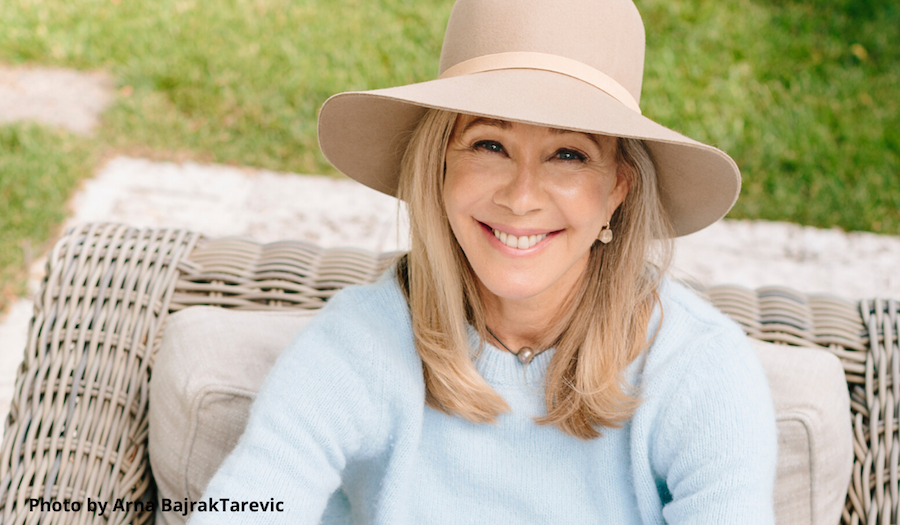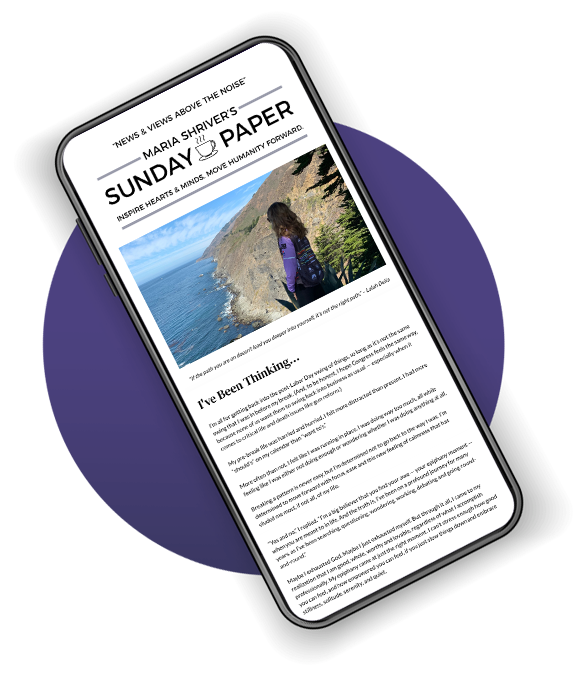How to Protect Yourself, Your Family, and Your Planet From a Toxic World

Is the damage we are doing to our planet literally leaving us sick? The answer is yes, according to Gay Browne, environmental pioneer and founder of Greenopia. The good news is, there are definitive steps we can take to clean up the environment. In her new book, “Living With a Green Heart,” Browne shares a roadmap for making incremental changes that will not only transform your life but heal the world we share.
1. How/why has our world become so toxic?
Toxicity is something that has silently crept into our world over the past six decades. The return of WWII soldiers, the combination of putting those men to work, emerging new technologies, the rise of the “Mad Men” advertising era and the need for convenience, created the “perfect storm” to launch the wave of consumerism that occurred as a result of society’s pent up desire to buy more and buy bigger. This was the good and bad that came along with the Baby Boomers: the increased demand for more food, water, and power to fuel this new economy. There were not enough governors put in place by the public or private sectors to adequately and efficiently measure the toxicity of products that were pouring out of corporations just as fast as consumers could buy them. As a result, the “health” of most of these products were overlooked in the well-intended advancements to meet new supply and demand. CEOs of public corporations were under pressure from shareholders, who had been schooled in the Friedman school of economics, that focused corporations’ purpose on profitability and shareholder returns (instead of the common good, the health of the consumer or the environment). Toxicity was and has continued to be an afterthought, until people like Erin Brockovich or the recently released movie, “Dark Waters” bubbles to the surface and demand people to pay attention to the increasingly toxic world in which we are living. In August of 2019 the “Business Roundtable, a group of 181 socially conscious CEOs, got together and signed a commitment to, “…lead their companies for the benefit of all stakeholders-customers-employees, suppliers, communities, and shareholders…” Initiatives like this will take a while but will go a long way in cleaning up the health of corporations, the products they make and the health of our environment.
2. Where can we find examples of toxic chemicals in our everyday lives?
There is not one place in our everyday lives where we can’t find toxins. Toxins are in our water, our food, our air, our clothing, and every other aspect of daily lives. This includes social media, which can be the most toxic of all. We are truly living in a time when everything we took for granted can’t be taken for granted anymore. What that asks of us is to ‘slow down’ and become more conscious in our daily actions by thinking about what products we use, who makes them, and how they affect us. It is very important to become more discriminating about the products we use, look at labels to find out their toxicity levels, and look for alternative products that are healthier for us and the planet. If we make healthier choices for ourselves, the ripple-effect goes outwards and creates health for ourselves, our families, our communities, and the whole planet.
Everything we do in our everyday world affects each of us as well as the planet. It is a great time to come together in solidarity for the health of our people and planet, and avoid those products that are toxic and those companies who make them.
My book is about looking at the toxins in the home and other aspects of daily living and explaining how to avoid them. Here are some common toxins that can be found in everyday living:
VOCs (Volatile Organic Compounds) – These are organic chemicals that have a high vapor pressure at ordinary room temperature. Just because “organic” is in the name, doesn’t mean they’re beneficial to you like organic produce. Plastics, fabrics, pesticides, cosmetics, and even dish detergents release VOCs like benzene and formaldehyde into the air we breathe. The good news is that, according to a study done by scientists at NASA, Pennsylvania State University, and the University of Georgia, common houseplants can absorb these among other VOCs! The most effective plants included Japanese royal ferns, spider plants, and English ivy.
Endocrine Disruptors – Here’s a fun experiment; tomorrow, try to count all the times you interact with plastic. Chances are you’ll lose count within an hour. Plastics contain endocrine disruptors, which are chemicals that interfere with the endocrine system. The endocrine system regulates all hormones in the body, so the plastics that we interact with every day have an effect on our hormones. Luckily, there are so many plastic alternatives available to us today to help us avoid these endocrine disruptors. My three favorite plastic-free swaps are reusable glass or stainless steel water bottles, bamboo toothbrushes, and glass food storage containers.
Preservatives – While there are certainly natural preservatives, like lemon juice, most companies like to use toxic chemicals to slow or delay the natural decomposition of commercial products and foodstuffs to make their products last longer. Preservatives are great for shelf-life but dangerous to our bodies and the planet. Common preservatives to watch out for include sodium benzoate, sodium sulfite, propylparaben, and butylated hydroxytoluene (BHT).
3. What is Personal Environmental Health and what are some of the small steps we can take to improve it?
My definition of personal environmental health is pretty simple: “Personal Environmental Health is what’s happening in the environment around you and how it’s affecting your physical, mental and emotional well-being.” For more of a detailed statement, I like the way the University of Minnesota describes it: “When we hear the word ‘environment,’ we generally think about the earth and the natural environment. But the environment also exists at a more micro level that includes your home and workplace. As with the larger environment, health and safety is essential in these personal environments. We need to make our personal space a refuge, a place to truly escape stress and the consequences of stress; to create a healing environment.”
Healing yourself and the planet is the reason I wrote the book. Getting rid of the toxins in your life is a very practical way to begin that process. I believe that although we are living in “toxic times,” the real opportunity is to learn how to heal each other, our communities and the planet. A lot of people think that organic foods and other healthy living products are expensive, and sadly they are more than they should be, but it is an expense that can enhance the quality of your life, and in some cases, save your life, if you have that ability. If not, there are some good ways to prepare conventionally grown produce that will reduce your intake of toxins. I go in-depth on this subject in the chapter on food in my book.
Take the “How Green Is Your Heart?” quiz in the book to find out how your personal environmental health stands!
4. Can small changes ultimately have an impact to a cleaner planet?
Definitely! The small changes that individuals make can collectively generate a wave of global change. I like to use the plastic bottle example. There are a little over 300 million people in the US. If each of us uses three single-use plastic bottles a day, then that is 900 million plastic bottles a day. However, if we all use one plastic bottle a day, that’s 300 million a day; a 60 percent reduction in daily use of single plastic water bottles; and to take it one step further, if 30 percent of us use no plastic bottles then that’s 100 million a day. If you were to add those numbers up over the year, that is an exponential difference in plastic reduction! And it all starts with simply saying no to single use plastic bottles; small but effective. Like Mahatma Ghandi said, “Be the change you wish to see in the world.” I believe this to be especially true for the environmental health movement today. For more plastic facts and tips on how to reduce plastic in your own life, check out the Plastic Pollution Coalition.
5. What do you hope readers will learn from reading your book?
This book really isn’t about saving the whole world, it is a book about saving your own world–the environment in which you live, your body and personal environment around you. It will take the collective efforts of public, private, and individual efforts all working together to clean up our world, and I hope that you will join me in making this possible, by taking one green heart action at a time.
Live and Love with a Green Heart!
Click here to order “Living With a Green Heart.”


